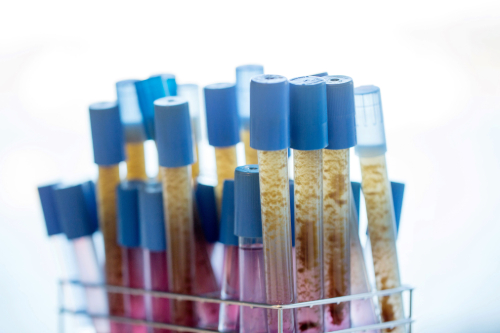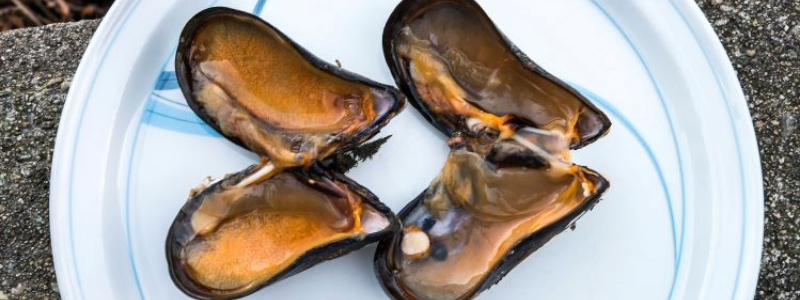A deep dive into the genomic world of marine Enterococcus faecium
Posted on January 3, 2024 by Amalie von Barner Tvedegaard Heim and Jørgen Vildershøj Bjørnholt
Amalie von Barner Tvedegaard Heim and Jørgen Vildershøj Bjørnholt take us behind the scenes of their latest publication 'Genomic insights into Enterococcus faecium isolates from marine bivalves highlight One Health concerns and healthcare linkages' published in Microbial Genomics.
My name is Amalie von Barner Tvedegaard Heim, I’m working as a laboratory engineer in the laboratory for molecular biology at the Institute of Marine Research in Bergen, Norway. This work was initiated as a part of my master’s degree in microbiology in 2019 and was a joint effort between the Institute of Marine Research, the Norwegian National Advisory Unit on Detection of Antimicrobial Resistance (University Hospital of North Norway), the Department of Clinical Microbiology (Oslo University Hospital), Institute of Clinical Medicine (University of Oslo) and the research group for Host-Microbe Interactions (Arctic University of Norway).
The rising level of antimicrobial resistance is a major cause for concern. For reasons well-understood, most of the research performed in this field has been directed towards antimicrobial resistance in microbes isolated from humans and livestock animals. But we thought, what about the ocean? Hence, as this had been rather scarcely investigated in previous studies, a desire to better understand the prevalence of antimicrobial resistance in the marine environment emerged.
The main character of our story is Enterococcus faecium, which, together with a whole range of other bacterial species, is one of our time’s leading causes of multidrug resistant infections in hospital settings. As enterococci are not indigenous to the sea (at least we don’t think so), we assumed that any isolates found in marine samples would have entered the marine environment from on-land facilities such as hospitals, run-offs, and sewage.
In Norway, the general use of antimicrobials is known to be more restrictive than in other parts of the world, but nevertheless there have been cases of antimicrobial resistant isolates found in both healthy and sick individuals from around the country. In our study, we used marine bivalves such as blue mussel and scallop as sentinel tools. Bivalves are stationary, and they filter enormous amounts of water daily, which leads to a retention of particles within the bivalve itself. By analyzing the bivalve contents using a Most Probable Number (MPN) method, we can learn more about what the water masses around the bivalve contain – that being bacteria, for instance. Maybe we would be able to link novel findings from the sea to already known data from studies on-land. The bivalves were collected along the Norwegian coast and further analyzed in the lab using microbial and molecular techniques.

A few months into the study, in early 2020 the COVID-19 pandemic hit. Despite the worldwide lockdown and a restriction of a maximum three people working in the lab at a time, bivalves were still sampled and successfully delivered to our lab for analysis. During the pandemic, lots of nice meetings were held online, and some memorable late evenings were spent in the lab. Being a master student filled with excitement to make some new groundbreaking (!) discoveries, I still remember the lighter disappointment when in the first couple of weeks we didn’t find any enterococci in any of the samples. In retrospect, I see that this must have been nothing but sheer misfortune since enterococci were otherwise detected almost weekly afterwards and later throughout the entire study.
Almost 500 bacterial isolates belonging to the genus Enterococcus were isolated from the bivalve samples, including E. faecium, E. hirae, E. faecalis, E. durans, E. casseliflavus, E. avium, E. thailandicus, E. gallinarum, E. mundtii and E. villorum. The majority of the samples were E. faecium, and from these, a large handful were sequenced for in-depth genomic analyses. We were all excited about the results which revealed new findings regarding enterococci in the marine environment in Norway. What was particularly interesting was that several of the isolates found in the bivalves were of similar strains as other isolates found earlier in both hospitalized and non-hospitalized persons in Norway. Some of these isolates had even been sampled several years apart, and in completely different parts of the country.
We have very much enjoyed working on this study, and we just as much hope that you as a reader will enjoy this article, which provides new insights into the genomic world of E. faecium sampled along the coast of Norway.

